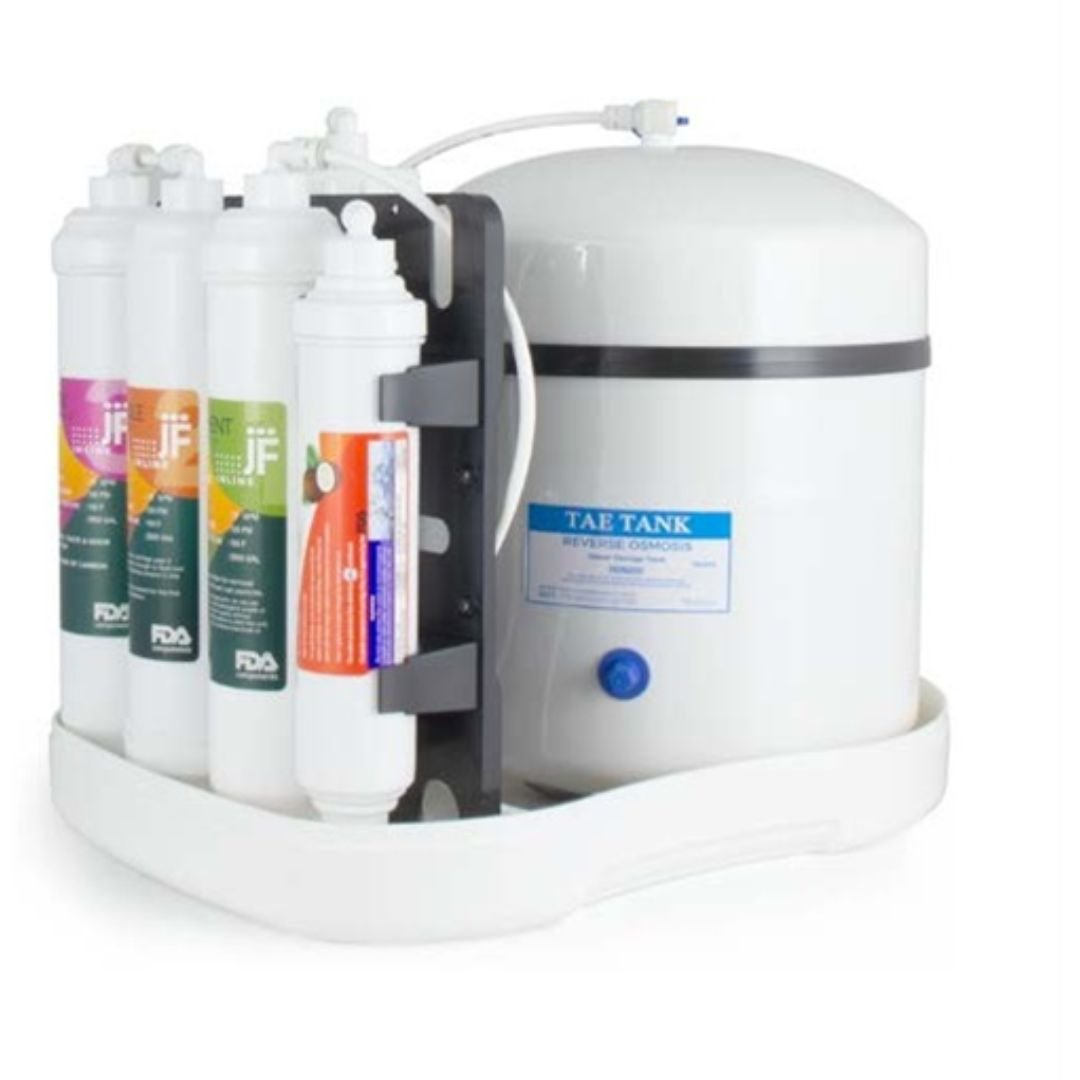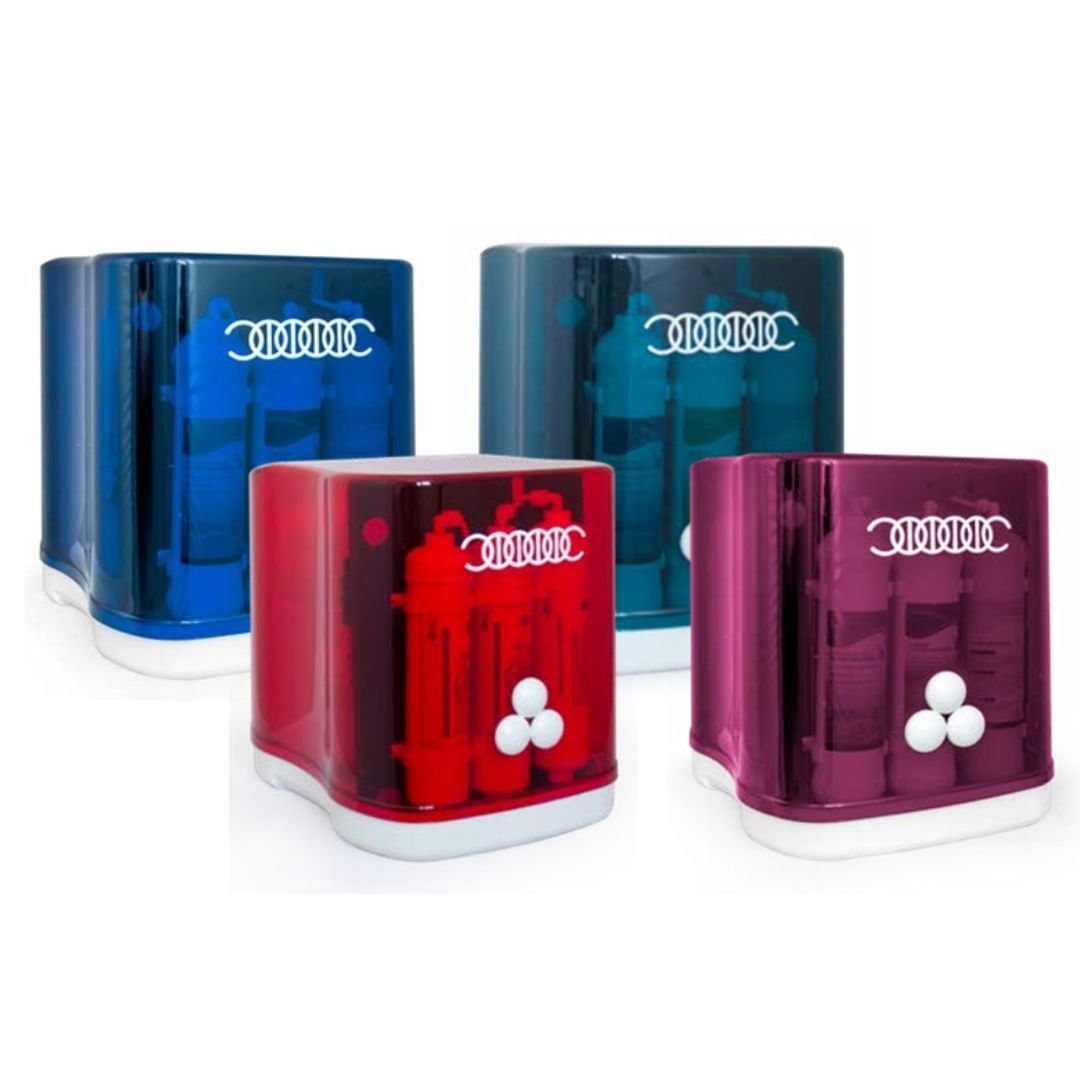Under Counter Reverse Osmosis Water Systems
Under-counter reverse osmosis water purifiers are systems that provide healthy, hygienic and reliable water in places such as homes, offices, factories, cafes and restaurants. The osmosis system basically refers to the transition from a less dense environment to a very dense environment in an environment where less dense and very dense environments are separated from each other by a semi-permeable membrane. Reverse osmosis is the opposite of this process. With the applied pressure, the movement of water from a very dense medium to a less dense medium is ensured.
The semipermeable membrane used in reverse osmosis systems has a pore diameter of 8-12 angstroms, while water molecules are smaller than 8-12 angstroms and have neutral electrical power. Thus, while water can easily pass through the membranes; Ions, molecules, bacteria and viruses with a pore diameter greater than 12 angstrom in the water cannot pass and return to the waste line. Thanks to this system, reliable drinking water is obtained.
Working Principle of Reverse Osmosis Water Treatment System
A minimum of 3 bar pressure is required for the system to work. The products are available with and without a pump. It is recommended to prefer pumped devices in regions where the pressure is insufficient, and non-pumped devices in other regions. It consists of a system containing 5-7 filters in total.
- Stage 1: Thanks to the sediment filters, solid particles such as sand, rust and clay in the water are prevented from entering the system. 5 micron and 1 micron sediment filters can be used as single or two-stage sediment filtration. Sediment filters should be changed every 6-8 months.
- Stage 2: Granular activated carbon (GAC), which has a more porous shape than regular carbon, is used. By adsorption, it keeps water organic substances, chlorine and chlorine components, which are carcinogenic in large amounts, and purifies it from impurities that may be harmful to human health and the membrane filter. At this stage, the bad taste, odor and colors that cause the water to become cloudy are also removed.
- Stage 3: In the block carbon filter, the water stays in contact with the carbon for a longer time and therefore more sensitive particle filtration is applied to the water. In this way, it is ensured that the water is purified from the smallest particles and pollutants remaining in it.
- Stage 4: The most important filtering stage is the membrane. Water is forced through a semipermeable synthetic membrane with 8-12 angstrom pores. In this process, 98-99% of the solid content dissolved in the water is filtered out. All organic and inorganic substances in the water, including bacteria and viruses, are prevented from passing through the membrane. The pollutants accumulated on the surface are then excreted as wastewater.
- Stage 5: Final carbon filter. The water purified up to this stage has become almost pure water. In order to make the water alkaline, the useful minerals, which were discarded as waste along with heavy metals and other pollutants in the previous processing stages, must be recycled back into the water. Thanks to the mineral filters, Calcium, Magnesium, Sodium, Potassium and other natural minerals lost during the process are added back to the water. Thus, clear, extremely safe and healthy drinking water is obtained. Post carbon filters can be added to the system to soften and flavor the water.
Reverse osmosis technology offers the best water purification method available with its advanced filtration capability. System design requires a lot of technical knowledge and experience, such as the quality of the desired water, raw water analysis, and the type of membrane to be used. UZ-AR's technical team will make the right choice for your system.



